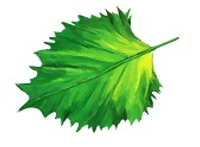
Joginder Nursery
Product details
The climbing fig, also known as Ficus pumila or creeping fig, is a popular ornamental plant known for its versatility and aesthetic appeal. Native to East Asia, this evergreen vine has found a place in gardens and homes worldwide due to its vigorous growth and ability to adhere to various surfaces. This article delves into the characteristics, cultivation, and uses of the climbing fig, providing a comprehensive overview for plant enthusiasts and gardeners.
Botanical Description:
The climbing fig is characterized by its small, heart-shaped leaves that are dark green and leathery. Juvenile leaves are typically 1 to 2 inches long, while mature leaves can grow up to 4 inches. The plant produces small, inedible figs that are greenish-yellow when mature.
Growth Habit: This vine exhibits a rapid growth rate and can climb surfaces through the use of aerial roots, which secrete a sticky substance that allows it to adhere to walls, trellises, and other structures. It can also spread horizontally as a ground cover, forming dense mats.
Climate and Soil: Climbing fig thrives in warm, humid environments but can tolerate a range of conditions. It is hardy in USDA zones 8-11. The plant prefers well-drained soil rich in organic matter but can adapt to various soil types.
Light Requirements: While the climbing fig can grow in full sun to full shade, it performs best in partial shade. In full sun, the leaves may become scorched, whereas in deep shade, growth may slow down.
Watering: Regular watering is essential, especially during the establishment phase. Once established, the climbing fig is relatively drought-tolerant but benefits from consistent moisture. Overwatering can lead to root rot, so ensuring proper drainage is crucial.
Pruning and Maintenance: Pruning is necessary to control the growth and shape of the plant. This can be done in late winter or early spring. Removing dead or damaged stems encourages healthier growth. Regular trimming helps maintain its ornamental appearance and prevents it from becoming invasive.
Ornamental Uses:
Ecological Benefits: The dense foliage of climbing fig provides shelter for small wildlife and insects. It also contributes to air purification by absorbing pollutants and releasing oxygen.
Indoor Planting: When grown indoors, climbing fig can be trained to cover frames or moss poles, adding a touch of nature to interior spaces. It requires bright, indirect light and regular watering to thrive indoors.
Pest and Diseases: The climbing fig is relatively pest-resistant but can occasionally suffer from scale insects, aphids, or spider mites. Regular inspection and appropriate treatments, such as insecticidal soap or neem oil, can help manage these pests.
Invasiveness: In some regions, the climbing fig can become invasive, outcompeting native plants and damaging structures with its vigorous growth. Regular pruning and monitoring are essential to prevent uncontrolled spreading.
The climbing fig (Ficus pumila) is a versatile and attractive plant that can enhance both outdoor and indoor spaces with its lush foliage and vigorous growth. Its adaptability to various growing conditions and ornamental value make it a favorite among gardeners and landscapers. With proper care and maintenance, the climbing fig can provide years of beauty and utility, transforming ordinary surfaces into living masterpieces
Similar products